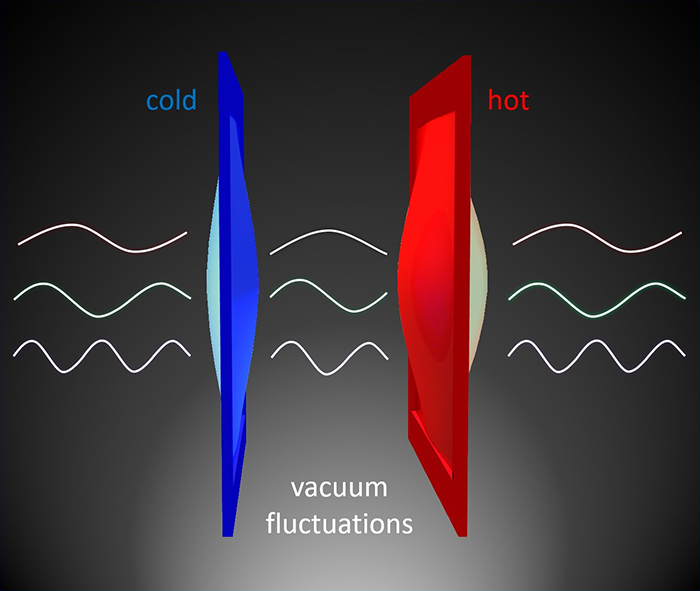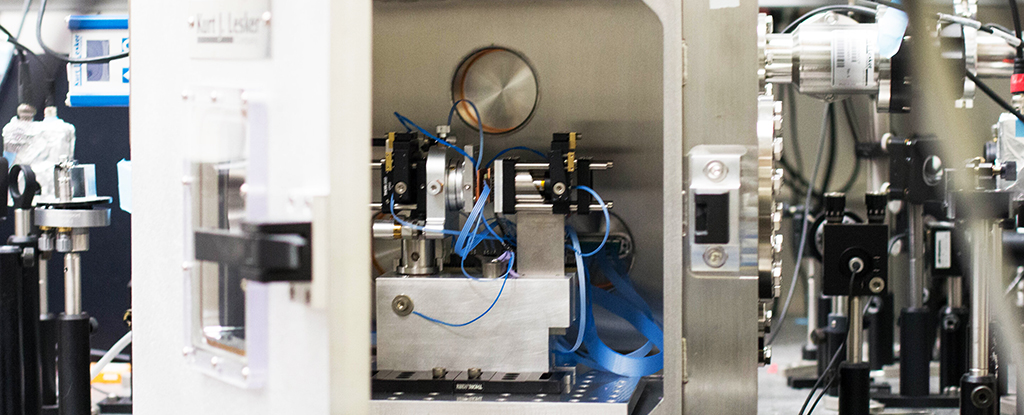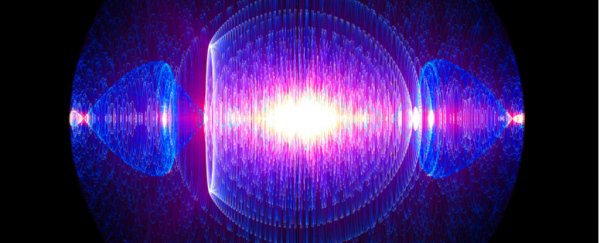Quantum physics has up-ended classical physics again, this time enabling heat to transfer across empty space without any of the atoms or molecules that would usually be needed for such a push.
The research taps into a particular bit of quantum weirdness known as the Casimir effect: the idea that empty space isn't really empty, but filled with tiny electromagnetic fluctuations that can interfere with the objects around them.
Scientists have previously demonstrated how the Casimir effect can move nanoparticles in a vacuum, and push two objects closer together; this latest study demonstrates how it can work with heat transfer, too.
 (Zhang Lab/UC Berkeley)
(Zhang Lab/UC Berkeley)
This discovery could influence the way that nanoscale electronic components and even quantum computers are designed, managing heat across the smallest scales as our devices shrink down.
"Heat is usually conducted in a solid through the vibrations of atoms or molecules, or so-called phonons – but in a vacuum, there is no physical medium," says mechanical engineer Xiang Zhang from the University of California, Berkeley. "So, for many years, textbooks told us that phonons cannot travel through a vacuum.
"What we discovered, surprisingly, is that phonons can indeed be transferred across a vacuum by invisible quantum fluctuations."
The point was proven by two gold-coated silicon nitride membranes placed a few hundred nanometres apart inside a vacuum chamber. Even with complete nothingness between the membranes, and negligible light energy, heating up one membrane caused the other to warm up too.
At larger scales this wouldn't happen – it's why the pocket of vacuum between the two walls of a thermos keeps your coffee warm, because the heat can't easily cross the gap – but at the tiniest of scales the implications could be profound.
Everything about the experiment had to be carefully configured and controlled: from precisely controlling the temperature of the membranes, to keeping the lab chamber completely free of dust.
 (Violet Carter/UC Berkeley)
(Violet Carter/UC Berkeley)
Although the distance that the heat travelled is very small, relatively speaking, it was far enough to rule out other causes for the transfer of heat, such as energy from electromagnetic radiation (which is how the Sun warms Earth through the vacuum of space).
And the scientists behind the study think that there could be more to come – if heat can travel through empty space then perhaps sound can, too. After all, they both rely on molecular vibrations to get around.
That will have to wait for another experiment. For now, the team is looking at ways this special quantum effect could be used to manage thermal flow in the computers and electronics of the future.
"This discovery of a new mechanism of heat transfer opens up unprecedented opportunities for thermal management at the nanoscale, which is important for high-speed computation and data storage," says mechanical engineer Hao-Kun Li from Stanford University.
"Now, we can engineer the quantum vacuum to extract heat in integrated circuits."
The research has been published in Nature.
